- Home
- Laurell K. Hamilton
Ardeur: 14 Writers on the Anita Blake, Vampire Hunter Series
Ardeur: 14 Writers on the Anita Blake, Vampire Hunter Series Read online
14 Writers on the Anita Blake, Vampire Hunter Series
edited by Laurell K. Hamilton
With Leah Wilson
Other titles in the smart POP series
Taking the Red Pill
Seven Seasons of Buffy
Five Seasons of Angel
What Would Sipowicz Do?
Stepping through the Stargate
The Anthology at the End of the Universe Finding Serenity
The War of the Worlds
Alias Assumed
Navigating the Golden Compass Farscape Forever!
Flirting with Pride and Prejudice Revisiting Narnia
Totally Charmed
King Kong Is Back!
Mapping the World of the Sorcerer’s Apprentice The Unauthorized X-Men
The Man from Krypton
Welcome to Wisteria Lane
Star Wars on Trial
The Battle for Azeroth
Boarding the Enterprise
Getting Lost
James Bond in the 21st Century So Say We All
Investigating CSI
Webslinger
Halo Effect
Neptune Noir
Coffee at Luke’s
Perfectly Plum
Grey’s Anatomy 101
Serenity Found
House Unauthorized
Batman Unauthorized
Demigods and Monsters
In the Hunt
Flirtin‘ with the Monster
Mind-Rain
A New Dawn
An Imprint of BenBella Books, Inc. Dallas, TX “Giving the Devil Her Due” Copyright © 2010 by Nick Mamatas
“Girls Gone Wild” Copyright © 2010 by Heather Swain
“Ambiguous Anita” Copyright © 2010 by Lilith Saintcrow
“Dating the Monsters” Copyright © 2010 by L. Jagi Lamplighter
“Bon Rapports” Copyright © 2010 by Marella Sands
“Mom! There’s Something Dead Sucking on My Neck!” Copyright © 2010 by Cathy Clamp
“The Other Side of the Street” Copyright © 2010 by Alasdair Stuart
“The Domestication of a Vampire Executioner” Copyright © 2010 by Natasha Fondren
“Ardeur‘s Purpose” Copyright © 2010 by Devon Ellington
“Trying the System” Copyright © 2010 by Melissa L. Tatum
“Are the Fangs Real?” Copyright © 2010 by Mikhail Lyubansky, Ph.D.
“Death Becomes Her” Copyright © 2010 by Naomi Sharon Lester
“Death’s Got Your Back” Copyright © 2010 by Vera Nazarian
“Showing the Scars” Copyright © 2010 by Jacob Clifton
Other Materials Copyright © 2010 by Laurell K. Hamilton
All rights reserved. No part of this book may be used or reproduced in any manner whatsoever without written permission except in the case of brief quotations embodied in critical articles or reviews.
Smart Pop is an imprint of BenBella Books, Inc. • smartpopbooks.com BenBella Books, Inc.
6440 N. Central Expressway, Suite 503 • Dallas, TX 75206
www.benbellabooks.com • Send feedback to [email protected]
Printed in the United States of America
10 9 8 7 6 5 4 3 2 1
Library of Congress Cataloging-in-Publication Data is available for this title. ISBN 978-1933771-47-2 Some copyediting by Oriana Leckert
Proofreading by Erica Lovett and Gregory Teague
Cover illustration by Ralph Voltz • Cover design by Laura Watkins
Text design and composition by Yara Abuata
Printed by Bang Printing
Distributed by Perseus Distribution • http://www.perseusdistribution.com/
To place orders through Perseus Distribution:
Tel: (800) 343-4499
Fax: (800) 351-5073
E-mail: [email protected]
Significant discounts for bulk sales are available. Please contact Glenn Yeffeth at [email protected] or (214) 750-3628. Contents
Table of Contents
Introduction • Laurell K Hamilton
Giving the Devil Her Due • Nick Mamatas
Girls Gone Wild • Heather Swain
Ambiguous Anita• Lilith Saintcrow
Dating the Monsters• L. Jagi Lamplighter
Bon Rapports• Marella Sands
Mom! There’s Something Dead Sucking on My Neck! • Cathy Clamp
The Other Side of the Street• Alasdair Stuart
The Domestication of a Vampire Executioner • Natasha Fondren
Ardeur‘s Purpose• Devon Ellington
Trying the System• Melissa L. Tatum
Are the Fangs Real? • Mikhail Lyubansky, Ph.D.
Death Becomes Her• Sharon Ashwood
Death’s Got Your Back• Vera Nazarian
Showing the Scars• Jacob Clifton
Introduction
by Laurell K Hamilton
I remember the May 2000 Nebula Awards in New York that Nick Mamatas writes about. There was a signing at a Barnes & Noble for the nebula nominees (the nebula is a literary award for the Science Fiction Writers of America [SFWA]). I was indeed one of the writers who was also appearing and not a nominee.
Most book signings are bleak. You sit at a little table with your books and people avoid your gaze, as if meeting it means they must buy something, or they think you work for the store. I got that a lot early on. it’s one of the reasons i stopped wearing the skirt suits or business casual. I got tired of being asked, “Where are the baseball card books?” I did years of signings like that, and then came this signing.
My agent, Merrilee Heifetz of Writer’s House, had showed up to give me moral support. I appreciated that. She alone knew that there were other things on my mind that weekend than networking. The nominees were reading from their works and the rest of us stood to one side quietly listening. Then the first group of women came up the escalator and spotted my name tag. They did that squeal-scream. I admit it scared me. Then they were so excited to see me. It was wonderful, but the other writers were reading, so I did my best to quiet them and assure them I’d sign books after the other writers were done. The second or third time I got that double-take on my name tag, and had to talk to fans while the other writers were still reading, I took my nametag off and gave it to Merrilee to hide. That helped a little, but it was too late, I had been spotted. When time came for the official book signing, Barnes & Noble had to give me a table and a chair of my own to one side, sort of segregated from the other authors, because my line was as big as everyone else’s combined. It was the kind of crowd that you want for a signing and never get. It was gratifying and embarrassing. Yay, I was a success. Boo, I worried it would make the other writers feel bad. I had a signing years ago when no one knew who I was, and got to sit by Margaret Weiss when Dragonlance was a very big deal. I signed maybe two books; her line was gigantic. So I’d been on the other end of the event.
What no one but my agent and my editor at the time knew was that my marriage was over. I was dating again after a decade and change. I had broken up with my current boyfriend just before I got on the plane to New York. The attention of the fans was only part of the change that weekend. At the Nebula dinner, publishers, editors, and other professionals in our business were all over me in a good, happy way. Suddenly I was everyone’s golden girl. It had only taken about a decade of writing and publishing to get there.
—Laurell
Giving the Devil Her Due
by Nick Mamatas
Why Guilty Pleasures Isn’t One
>
I have a deep respect for Laurell K. Hamilton, which never fails to surprise people. My own fiction is on the “slipstream” edge of the genre, as likely to be published in an underground zine or mainstream literary journal as it is in a genre magazine. My few books have been published by independent presses, some run out of the publishers’ apartments, others well-known for their lists of titles about overthrowing the government. Hamilton, of course, is one of the most popular and mainstream of fantasy and horror writers. Surely I should be in the back of a café somewhere, in a black turtleneck and a beret, cursing my own fate and shaking my fist at Hamilton. It’s what more than a few of my friends preoccupy themselves with. But I’m not—I think Hamilton, especially in her early books, did some significant work. The Anita Blake series earned its popularity by doing something very little fantasy and horror did in the 1990s: it took women seriously.
This revelation came to me years ago. In May 2000, the Science Fiction and Fantasy Writers of America (SFWA) held their annual Nebula award show and conference in New York City. As part of the weekend, SFWA put on a reading and signing event at the large Barnes & Noble in Union Square. Nebula nominees were invited to read for all of ninety seconds apiece, Grandmaster Brian Aldiss gave a talk, and SFWA members attending the awards showed up. The ads for the event were simple enough: the Nebula nominees got top billing, and there was a long list of writers “also appearing” at the event and available for autographs.
Like most events with lots of writers and relatively few fans, the bookstore smelled of acrid desperation and sounded like a cattle auction. Why so few fans? It’s common knowledge that the readership for science fiction and fantasy is “graying”—older men and women still read the stuff, but kids these days are going for anime and video games. The Nebulas, while prestigious in science fiction circles, aren’t exactly the Oscars, either. The nominees took their places at the tables the bookstore set up for them, and the “also appearing” writers prowled alone or in small packs, waving bookmarks and cover flats, hoping that someone might recognize them or want a signature. Few people did, for much the same reason few people approach the crazy man who spends his day at the Port Authority passing out leaflets and shouting about sperm, The Book of Revelation, and gravity. It’s just creepy.
Then Laurell K. Hamilton showed up. She was very popular, despite being just another writer who was “also appearing.” Popular enough that Barnes & Noble employees had to come up with a table and a chair for her, because Laurell K. Hamilton had a line, one as long as the Nebula nominees en masse had. Rather than the usual suspects of New York’s science fiction fandom and the occasional aspiring writer (guilty!), the people in Hamilton’s line were quite different. They were women. They were people of color. They had traveled from as far as the Bronx, and sometimes mothers and daughters had even come together. They brought presents for Hamilton—you know, roses and whatnot. They had tons of well-loved and often reread paperbacks with cracked spines for her to sign. Hamilton fans were all smiles, while the people getting signatures from the Nebula nominees tended to have the eagerly blank look often sported by the professional fan or the resigned mugs of an eBay “power seller” looking for a score.
Science fiction and fantasy people—writers, editors, publishers, Big Name Fans, you name it—have spent years bemoaning declining readership. It’s too old, it’s not being replenished by kids, there’s not enough stuff that appeals to women and to people of color. Hamilton changed all that, even before she became a bestselling author. A look at Guilty Pleasures, the first of the Anita Blake novels, can help us understand the level of Hamilton’s achievement. With Blake and the universe she inhabits—one in which vampires have Supreme Court protections—Hamilton accomplished the seemingly impossible: she created a new subgenre, urban fantasy-adventure with a female lead, and built a new audience for it. Here is how she did it.
1. Hamilton Realized That Female Readers Want a Kick-Ass heroine they Can identify With
Anita Blake has few female antecedents in popular literature. If anything, Blake is a character straight out of Robert Howard, except that she has a vulnerability and an honesty that few “badasses” do. Here she is reminiscing in Guilty Pleasures about being attacked by a vampire, one she is confronting again:
My screams. His hand forcing my head back. Him rearing to strike. Helpless… . He lapped up my blood like a cat with cream. I lay under his weight listening to him lap up my blood… . I was beginning not to hurt, not to be afraid. I was beginning to die.
Who saves Anita? Anita does, with holy water that had fallen from her bag. She doesn’t kill the vampire, but scars him for eternity. And Anita wears plenty of scars, too, displaying them like badges of honor to her enemy. In 1993, this was powerful stuff. It may be difficult, in these postBuffy times, to remember quite how revolutionary Anita was just seventeen years ago. In virtually any other novel of the period, Anita’s boyfriend—or even worse, a man she loathed but whom she could not help but be attracted to—would have saved her. The fangs on her neck would have been a recurring theme throughout the novel, indeed perhaps even throughout the series, as the author reveled in the rape survivor-like vulnerability of the “heroine.” Hamilton didn’t play that way, and was not afraid to show us Blake’s fear and her bravery, her interest in justice and her own interior darkness.
2. Hamilton Didn’t Shy Away From, or Romanticize, the Sex
Sex is a part of life, but if one reads romance novels, sex is either too dirty to contemplate or too comical to enjoy: purple-helmeted warriors of love and all that. In science fiction and fantasy, the situation was even worse—the genres were essentially celibate. Outliers such as Anne Rice, who had long before left the genre and has simply become a Bestselling Author, had plenty of sexuality, but much of it was inhuman or involved no women. Hamilton, through Blake’s eyes, had a sense of sex and the physical details of the body that readers wanted. Here’s a great scene from Guilty Pleasures:
She pulled down the silky bra to expose the upper mound of her breast. There was a perfect set of bite marks in the pale flesh… . I thought he was going to ask for help, but she kissed him, sloppy and deep, like she was drinking him from the mouth down. His hands began to lift the silk folds of her skirt. Her thighs were incredibly white, like beached whales.
Perhaps this was the first time in the history of dark fantasy that the words “breast” and “perfect” were used in close proximity to one another without perfect being used to describe the breast in question. Kisses are sloppy and thighs like beached whales—not lines to use on one’s lover in bed!—yet there is a strong sensuality in the books anyway. Vampires are both superhuman and subhuman, objects of desire and creepy monsters. In that way, they are much like human beings—in the whirl of sex, even flaws and rolls of fat take on an attractive mien. While not often appreciated for this, Hamilton’s early books are both highly sexual and realistic. Rather than appealing to the high Romantic notions of the vampire popularized by Rice, Hamilton performed a little nucleic exchange between the woman’s novel, the vampire story, and the noir mystery. Sex was as fun as it was dirty in Hamilton’s narrative universe, and after more than a decade of treacle and misdirection, readers were ready for a heroine who couldn’t say “make love” with a straight face.
Interestingly enough, in Guilty Pleasures, Blake herself doesn’t have sex. The tag line of the 1993 paperback even reads, “I don’t date vampires, I kill them.” However, the world remains a sensuous, sexualized one. The abject—the idea of simultaneous attraction and revulsion—is in play, and this notion is essential to good vampire stories. Turn the vampires into shambling subhuman monsters, and you may as well be watching a zombie film. Make them Fabio-style romance heroes with pirate sleeves and six-pack abs, and there’s no terror in the monster. Hamilton struck a middle ground in Guilty Pleasures in an intriguing way, with a heavily sexualized setting and a non-sexual protagonist.
3. Blake Has Real Problems
Popular fi
ction is full of what writer and teacher Stace Budzko calls “Cowboy problems.” The everyday issues and problems we all face simply don’t show up amidst all the world-saving and bad guy-shooting that paperbacks occupy themselves with. Indeed, this strange divorce from real life is part of why books chock full of death, beatings, torture, war, privation, and horrors are “escapes” for their readers.
Anita Blake has real problems, though. After raising a zombie, she runs for it and falls on her ass. “Hose are not made for running in,” she notes. Of course the zombie isn’t the real problem; the lack of traction in the pantyhose is. The taste of realism, and Blake’s matter-of-fact remark, help us to actually believe in the fantastical problem of being chased by a zombie. And here’s a problem that everyone has faced one weekend morning or other:
The alarm shrieked through my sleep. It sounded like a car alarm, hideously loud. I smashed my palm on the buttons. Mercifully, it shut off. I blinked at the clock through half-slit eyes. Nine a.m. Damn. I had forgotten to unset the alarm. I had time to get dressed and make church. I did not want to get up. I did not want to go to church. Surely, God would forgive me just this once.
There is a near-inevitable scene in fantasy books, and more than a few crime novels, where someone “gears up.” A wise old figure hands out the magical devices, or offers up sufficient money, outfits, and limos to make a private dick look like he’s made good. Not Anita. She spends the early novels slogging through a world where she is outclassed in virtually every way. While she has significant internal resources and some vampire-related powers she suffered to gain, she is also an ordinary woman of ordinary means, a small-time player punching way out of her weight class. It’s how we all feel sometimes, in this world of pointy-haired managers and rich Hollywood types who can get away with behavior that would see us disowned, arrested, or even just beaten down on the streets. No maids, no gadgets, no perfect life disrupted by the supernatural—Anita was a bit of a mess to begin with, adding a level of verisimilitude not seen in previous heroines, or even in many of the subsequent urban fantasy novels in the Blake mode. No less of an authority on the fantastic than Italo Calvino explained it best: “Fantasy is like jam… . You have to spread it on a solid piece of bread. If not, it remains a shapeless thing … out of which you can’t make anything.” Blake’s quotidian problems are the crust on which the fantasy lays, and what makes the fantasy feel realistic enough to work. Most contemporary urban fantasy has not learned this lesson.

 Cerulean Sins
Cerulean Sins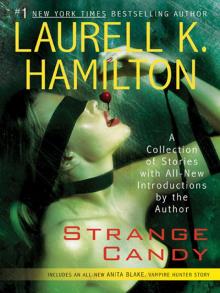 Strange Candy
Strange Candy Serpentine
Serpentine Swallowing Darkness
Swallowing Darkness Guilty Pleasures
Guilty Pleasures A Caress of Twilight
A Caress of Twilight Affliction
Affliction Dead Ice
Dead Ice Mistrals Kiss
Mistrals Kiss Dancing
Dancing Seduced by Moonlight
Seduced by Moonlight Jason
Jason The Harlequin
The Harlequin Burnt Offerings
Burnt Offerings Blue Moon
Blue Moon A Kiss of Shadows
A Kiss of Shadows Narcissus in Chains
Narcissus in Chains Obsidian Butterfly
Obsidian Butterfly Danse Macabre
Danse Macabre The Laughing Corpse
The Laughing Corpse Never After
Never After Incubus Dreams
Incubus Dreams Skin Trade
Skin Trade Circus of the Damned
Circus of the Damned A Stroke of Midnight
A Stroke of Midnight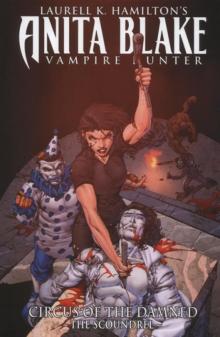 Laurell K. Hamilton's Anita Blake, Vampire Hunter
Laurell K. Hamilton's Anita Blake, Vampire Hunter Hit List
Hit List Micah
Micah Divine Misdemeanors
Divine Misdemeanors Bloody Bones
Bloody Bones Flirt
Flirt Wounded
Wounded The Lunatic Cafe
The Lunatic Cafe A Shiver of Light
A Shiver of Light Kiss the Dead
Kiss the Dead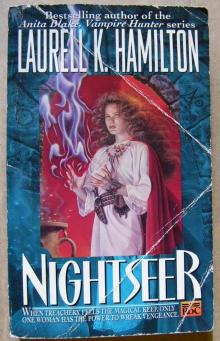 Nightseer
Nightseer Bullet
Bullet The Killing Dance
The Killing Dance A Lick of Frost
A Lick of Frost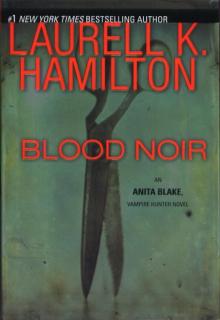 Blood Noir
Blood Noir Shutdown
Shutdown Beauty
Beauty Nightshade
Nightshade Cravings
Cravings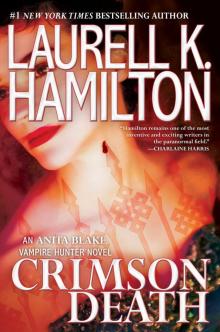 Crimson Death
Crimson Death Bite
Bite Sucker Punch
Sucker Punch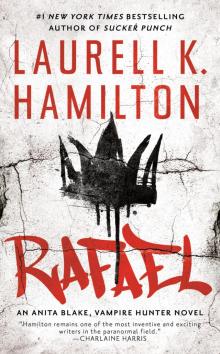 Rafael
Rafael Fantastic Hope
Fantastic Hope A Terrible Fall of Angels
A Terrible Fall of Angels Anita Blake 4 - Lunatic Cafe
Anita Blake 4 - Lunatic Cafe Obsidian Butterfly ab-9
Obsidian Butterfly ab-9 A Kiss of Shadows mg-1
A Kiss of Shadows mg-1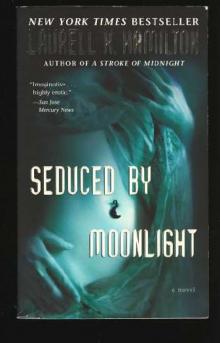 Seduced by Moonlight mg-3
Seduced by Moonlight mg-3 The Scoundrel
The Scoundrel Anita Blake, Vampire Hunter collection 11-15
Anita Blake, Vampire Hunter collection 11-15 Mistral's Kiss mg-5
Mistral's Kiss mg-5 Incubus Dreams ab-12
Incubus Dreams ab-12 Affliction ab-22
Affliction ab-22![[Anita Blake 17] - Skin Trade Read online](http://i1.bookreadfree.com/i/03/23/anita_blake_17_-_skin_trade_preview.jpg) [Anita Blake 17] - Skin Trade
[Anita Blake 17] - Skin Trade![[Anita Blake 18] - Flirt Read online](http://i1.bookreadfree.com/i/03/22/anita_blake_18_-_flirt_preview.jpg) [Anita Blake 18] - Flirt
[Anita Blake 18] - Flirt Flirt ab-18
Flirt ab-18 A Caress of Twilight mg-2
A Caress of Twilight mg-2 Danse Macabre ab-14
Danse Macabre ab-14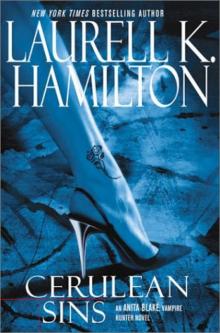 Cerulean Sins ab-11
Cerulean Sins ab-11![[Merry Gentry 05] - Mistral's Kiss Read online](http://i1.bookreadfree.com/i1/03/29/merry_gentry_05_-_mistrals_kiss_preview.jpg) [Merry Gentry 05] - Mistral's Kiss
[Merry Gentry 05] - Mistral's Kiss Death of a Darklord
Death of a Darklord ABVH 01 - Guilty Pleasures
ABVH 01 - Guilty Pleasures Bullet ab-19
Bullet ab-19 Anita Blake 12 - Incubus Dreams
Anita Blake 12 - Incubus Dreams Curcus of the Damned
Curcus of the Damned Dancing (anita blake)
Dancing (anita blake)![[Anita Blake 15] - The Harlequin Read online](http://i1.bookreadfree.com/i1/04/01/anita_blake_15_-_the_harlequin_preview.jpg) [Anita Blake 15] - The Harlequin
[Anita Blake 15] - The Harlequin Meredith Gentry 01 - A Kiss of Shadows
Meredith Gentry 01 - A Kiss of Shadows Death of a Darklord (ravenloft)
Death of a Darklord (ravenloft)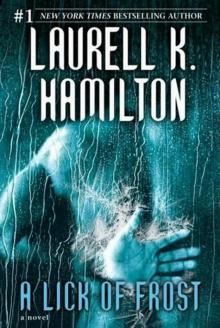 A Lick of Frost mg-6
A Lick of Frost mg-6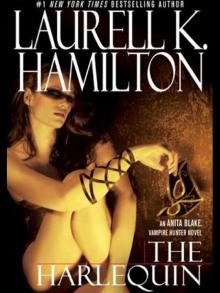 The Harlequin ab-15
The Harlequin ab-15![[Merry Gentry 04] - A Stroke of Midnight Read online](http://i1.bookreadfree.com/i2/04/10/merry_gentry_04_-_a_stroke_of_midnight_preview.jpg) [Merry Gentry 04] - A Stroke of Midnight
[Merry Gentry 04] - A Stroke of Midnight Anita Blake 11 - Cerulean Sins
Anita Blake 11 - Cerulean Sins The Girl Who was Infatuated with Death
The Girl Who was Infatuated with Death Micah ab-13
Micah ab-13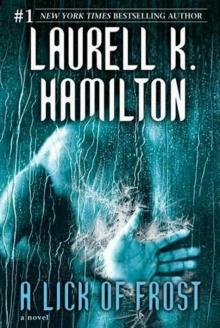 Meredith Gentry 6 - A Lick of Frost
Meredith Gentry 6 - A Lick of Frost 16 Blood Noir ab-16
16 Blood Noir ab-16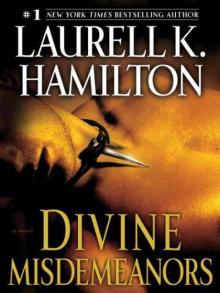 Divine Misdemeanors_A Novel
Divine Misdemeanors_A Novel Hit List ab-20
Hit List ab-20![[Anita Blake Collection] - Strange Candy Read online](http://i1.bookreadfree.com/i2/04/12/anita_blake_collection_-_strange_candy_preview.jpg) [Anita Blake Collection] - Strange Candy
[Anita Blake Collection] - Strange Candy Ardeur: 14 Writers on the Anita Blake, Vampire Hunter Series
Ardeur: 14 Writers on the Anita Blake, Vampire Hunter Series Anita Blake 8 - Blue Moon
Anita Blake 8 - Blue Moon Swallowing Darkness_A Novel
Swallowing Darkness_A Novel